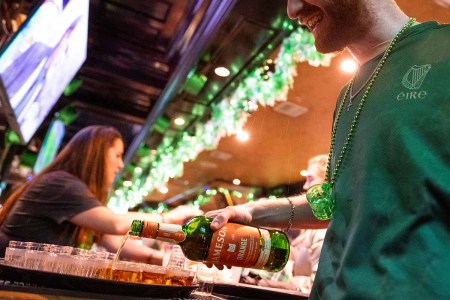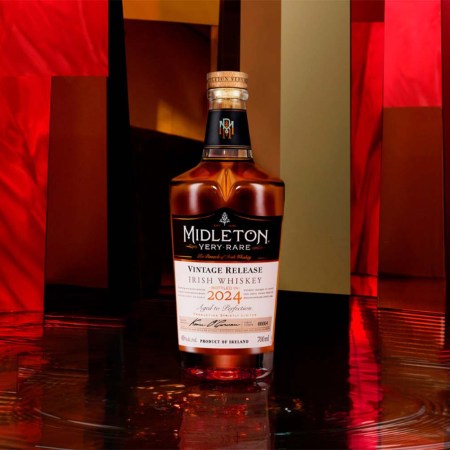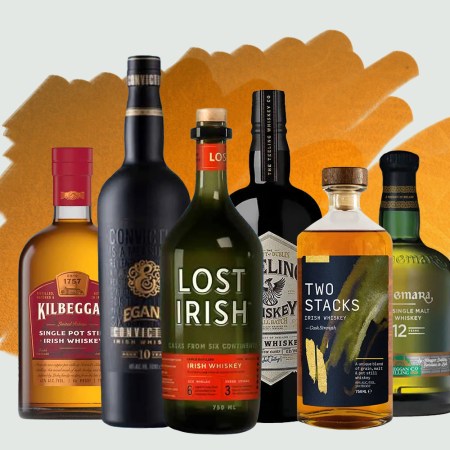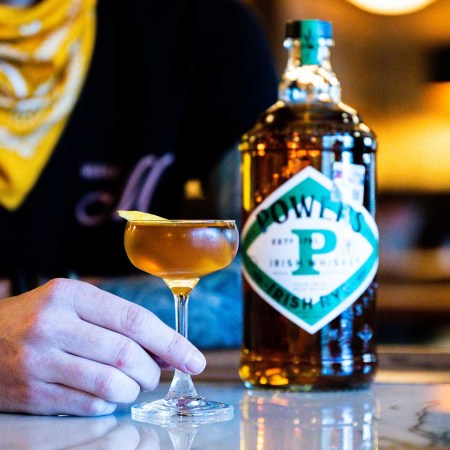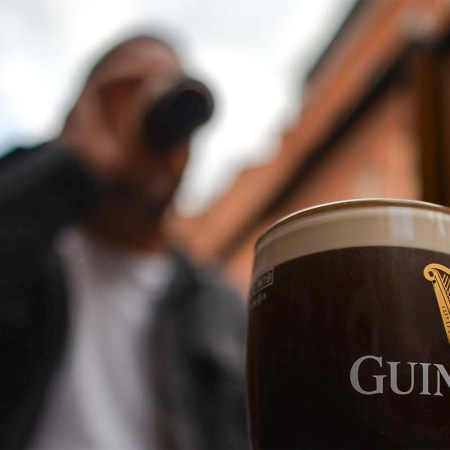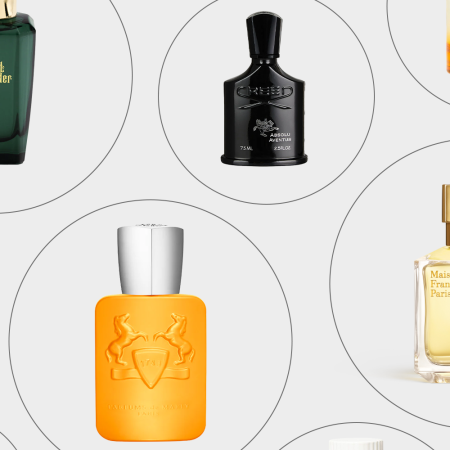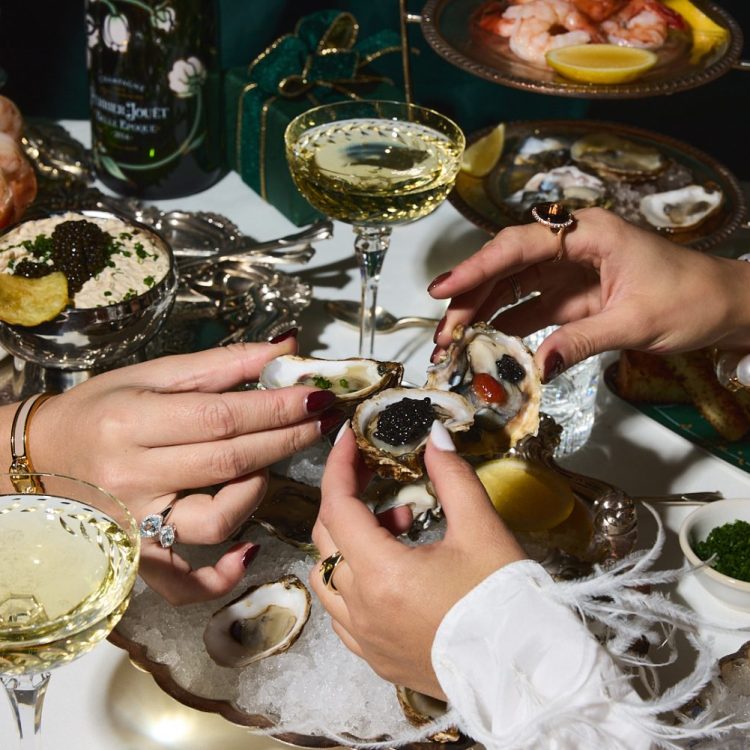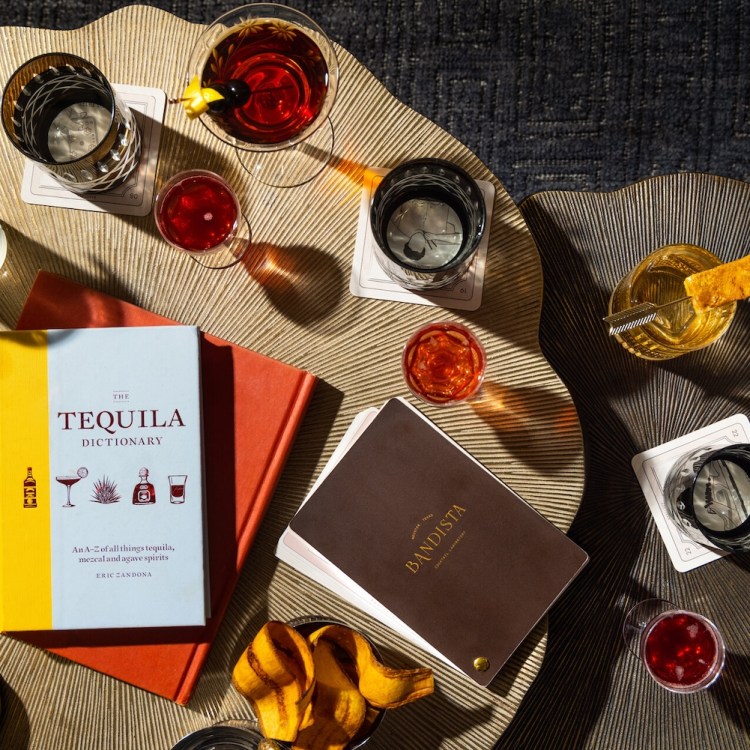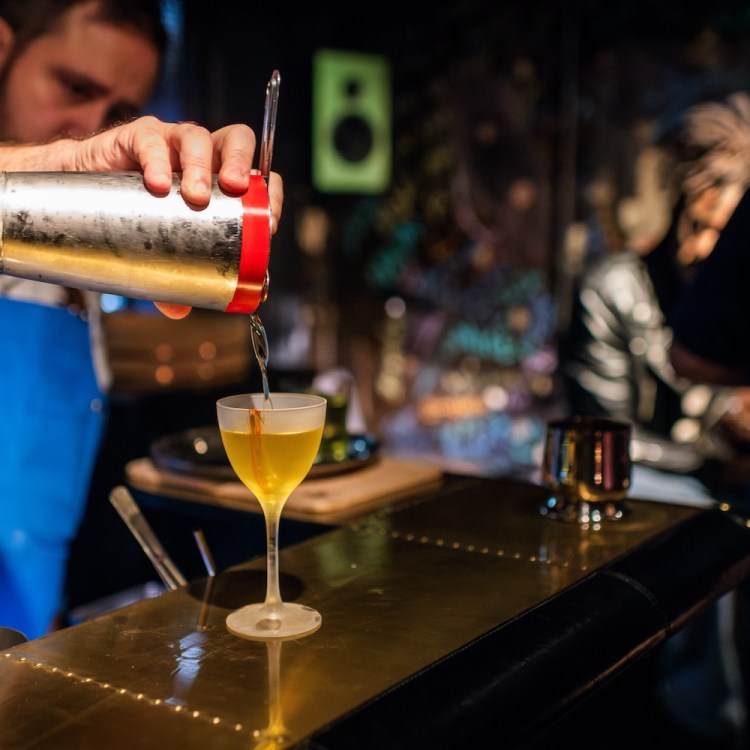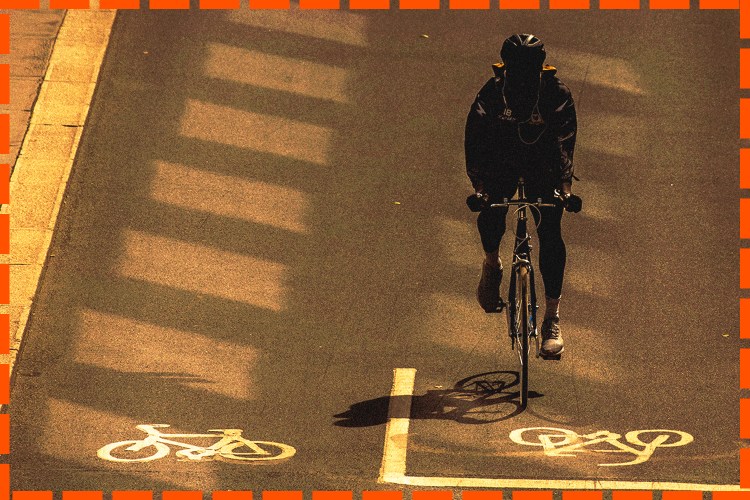In Guy Ritchie’s recent Netflix show The Gentlemen, a memorable scene involves a nomadic group of Irish travelers who share some homemade poitín with the aristocrat lead, Theo James. What follows is an illicit partnership and a raucous party, all fueled by the unaged, Irish-made spirit, a cousin to whiskey that was taxed and eventually criminalized by King Charles II beginning in 1661.
Poitín (pronounced poht-cheen) is Ireland’s “white Irish spirit,” explains Dave Mulligan of Dublin’s award-winning Bar 1661. “I’m a little biased as I own Bán Poitín (pronounced bawn, meaning white in Irish), and it’s the house pour at the bar.” As a poitín maker, as well as owner of Bar 1661 — named for the year poitín was first taxed — Mulligan was confident that the rise in popularity was only a matter of time.
In fact, over the past few years, poitín has garnered so much international attention that it’s being referred to as the “new” mezcal. Mulligan disagrees. “Mezcal is Mexican. Moonshine is American. Poitín is the grandfather to the world’s whiskey,” he says. “I think it’s about time other categories started comparing themselves to us and not the other way around.”
Historically, many poitín distillers had to rely on the available ingredients rather than sticking to one recipe. That illicit history of poitín is so interwoven into Irish culture that the act of distilling can and has been seen as an act of rebellion. “There was a period in the 1800s known as the Poitín Wars,” says Brendan Carty, the director of small batch Irish distillery Killowen. “Customs men attempted to stop all illicit poitín making across Ireland with a heavy-handed approach. This, of course, was only partially successful.”
Poitin’s place in Irish homes never wavered and was used to mark special occasions, traditionally enjoyed at celebrations and funerals. “Poitín was enjoyed like mezcal or whiskey, neat or in a cocktail,” Carty says. “It was seen to have had many magical connections with ‘the shee,’ or fairy people.”
Now, the biggest challenge in revamping poitín’s incendiary, centuries-old stigma has little to do with the alcohol content. The spirit has only been legal since 1997 but already has boasted its own GI (Geographical Indicative Status in Ireland) since 2008 and is well on its way to having a cultural renaissance. This is thanks to six licensed distillers and a handful of establishments like award-winning bars The Dead Rabbit in NYC and Dublin’s Bar 1661, both of which have embraced the newly legal spirit category.
Let’s break down what makes poitín special.

What Is Poitín?
Poitín and whiskey may be very similar, but they actually couldn’t be more different. “The cereals used to make poitín are as follows: barley, oats, wheat and rye, in that order,” says Pádraic Ó Griallais from Micil Distillery. “The proportions of those cereals would vary from season to season and from batch to batch. Poitín is traditionally double distilled and occasionally triple distilled.”
That said, there are three main differences between types of poitín spirits: whether it’s peated or unpeated, if the mash is made of just malted barley or a mixture of malted barley and oats or other cereals, and if it’s rested. Historically, these differences were derived from necessity and availability. Today, it just means that it’s up to the distiller’s discretion. The poitín base can also include apples, potatoes or other fruits and whey.
Because the category is so new, some of the requirements are flexible — for now. “The transparency is up to the maker, but there is no requirement to document this info on the bottle,” Carty says. “Unfortunately, most don’t do it yet but they will.”
As for resting, that was initially more for expediency than flavor. “Poitín is never aged, but it was often stored for short periods in small casks — perfect for smuggling and hiding,” Ó Griallais says. “We also rest the two styles of poitín in small casks for up to 10 weeks to continue the tradition of short cask resting periods.” For modern distillers, resting can last anywhere from a few days up to a few months, and some are experimenting with resting woods like chestnut, Irish oak and sherry casks.
The Quest to Make Irish Whiskey a Year-Round Spirit
It’s not just for St. Patrick’s DayThe History of Poitín
The Irish white spirit is a perfect storm of language, medicine and distillation processes brought over from other parts of the world. “The word itself means small pot still in the Irish language,” Ó Griallais says. “The word used for poitín by native Irish language speakers is also ‘fuisce.’” That word, or Uisce Beatha, means water of life and is a version of the word that eventually transitioned into whiskey.
“[Poitín] was first made by Irish monks in the sixth century in monasteries like Glendalough,” says Ciaran “Rowdy” Rooney, head distiller from, coincidentally, Glendalough Distillery.
Many distilled spirits originally had medicinal purposes, like that of gin infused with local botanicals in the 14th century. “This later evolved to a grain-only drink with the like of Bulcán (a type of poitín) being documented in the 17th century,” Carty says.

The word, bulcán, means “blow to the head” and is featured heavily in a 17th-century satirical tale about a man who goes on a two-day adventure and ends up in a fight with an ogre. Bulcán, which is made with a larger proportion of oats, has a high alcohol content and was traditionally served most often at wakes and funerals.
Versions of poitín were made all over Ireland, using a mix of cereals and other ingredients easily found on farmland before a license and tax were implemented. By 1793, making poitín at home was outlawed, as the spirit was too hard to tax. “Records are scarce, but confiscation records from the authorities demonstrate that poitín making was strongest in the west and north of Ireland,” Ó Griallais says. “The west of Ireland was less densely populated and more remote, and therefore more challenging for the authorities to police. Connemara in County Galway was one of the best-known regions for poitín making in the country.”
Most people are familiar with the high-octane spirit of moonshine, made in the Southeastern United States by colonial Scotch-Irish settlers who brought their distilling skills with their immigration to the Appalachians. “The term moonshine is part of the story of poitín and a part of the history of the Irish diaspora in the USA,” says Mark McLaughlan, director of Irish Whiskey at The Dead Rabbit. “Given the practice was illicit to do at home, they would do it at night so the smoke from the stills wouldn’t be seen by the authorities, with the only sign being the light of the moon shining off the copper stills they used. Many still view it as high ABV rocket fuel made in the hills of rural Ireland, but that narrative is slowly being changed by small distilleries telling the honest stories of poitín.”

How Is Poitín Made?
A farm spirit is made on a farm’s calendar, meaning most distillation traditionally occurred in the cooler winter months. Summer production had other drawbacks, according to Ó Griallais. “Alcohol yields were not as good because of the prevalence of competing wild yeast and wild bacteria in the summer,” he says. “Most distillers were farmers too, which meant other summer duties had to be prioritized, like saving hay, turf and various crops. The long days were impractical for illicit distillers trying to avoid the authorities. Long winter nights were preferred for discretion.”
To make poitín, the cereals are first brewed into a distiller’s beer, and yeast is added to the wort to ferment. Over the course of a few days, that wort becomes what’s known as a wash, which is then moved to pot stills for further distillation. Micil’s indoor fermenters are stainless steel and, as a way to mimic the flavor of outdoor distilling, they are left open for up to three days to allow the natural yeast to interact with the wash. This produces more esters, which translates to a deeper flavor with greater hints of fruit.
“We continue to harvest our peat, which is unique in the category today,” Ó Griallais says. “All of our poitín products are flavored with wild bogbean botanicals that we pick in our family land in Connemara. We still use a copper pot still to distill our poitín, but our modern still has a small column on the pot, and we use that to get better yields. While poitín has always been made in copper pot stills, some change is inevitable but only as it serves to improve production.”
What Is the Future of Poitín?
If you haven’t heard of poitín until reading this article, you will soon. Local distillers like Killowen, Glendalough, Teeling and West Cork make high-quality Irish poitín in very digestible forms but there is plenty of variety. The spirit’s even made its way into the RTD space with a poitín-based brand called Little & Green.
“There is not many a cocktail list in the country that wouldn’t feature poitín now, which is a big leap forward from where we were five years ago,” Mulligan says.
Padraic Ó Griallais points out that after shame from the Great Famine and colonization by the British, Irish culture and pride are at an all-time high. “We’re prouder than ever about our native language and our culture, which includes poitín,” he says. “It’s an old spirit, but we’re now producing and drinking it in a modern way.”
How to Drink Poitín
There are many ways to drink poitín, from neat to Hot Toddies or in a traditional Irish milk punch served warm called scáiltín, which may be a precursor to many other Irish cream liqueurs. Scáiltín is a combination of poitín, milk, cream, butter, honey, sugar and occasionally spices. McLaughlin has some other suggestions, like The Dead Rabbit’s Hush Hush or White Cat cocktails, both served in the Parlor at the bar’s Financial District location.
Mulligan has other thoughts, including one drink that sounds ideal for summer. “Belfast Coffee all day!” he says. “It’s the poitín-based, cold-brewed version of a classic Irish Coffee. We see this drink popping up all over Ireland and abroad. At Bar 1661, it even outsells Guinness daily, which is no mean feat in Dublin. If I’m sipping it neat (which is often), I usually have a pint of Guinness on the other hand. A bán and black we call it.”
Join America's Fastest Growing Spirits Newsletter THE SPILL. Unlock all the reviews, recipes and revelry — and get 15% off award-winning La Tierra de Acre Mezcal.

